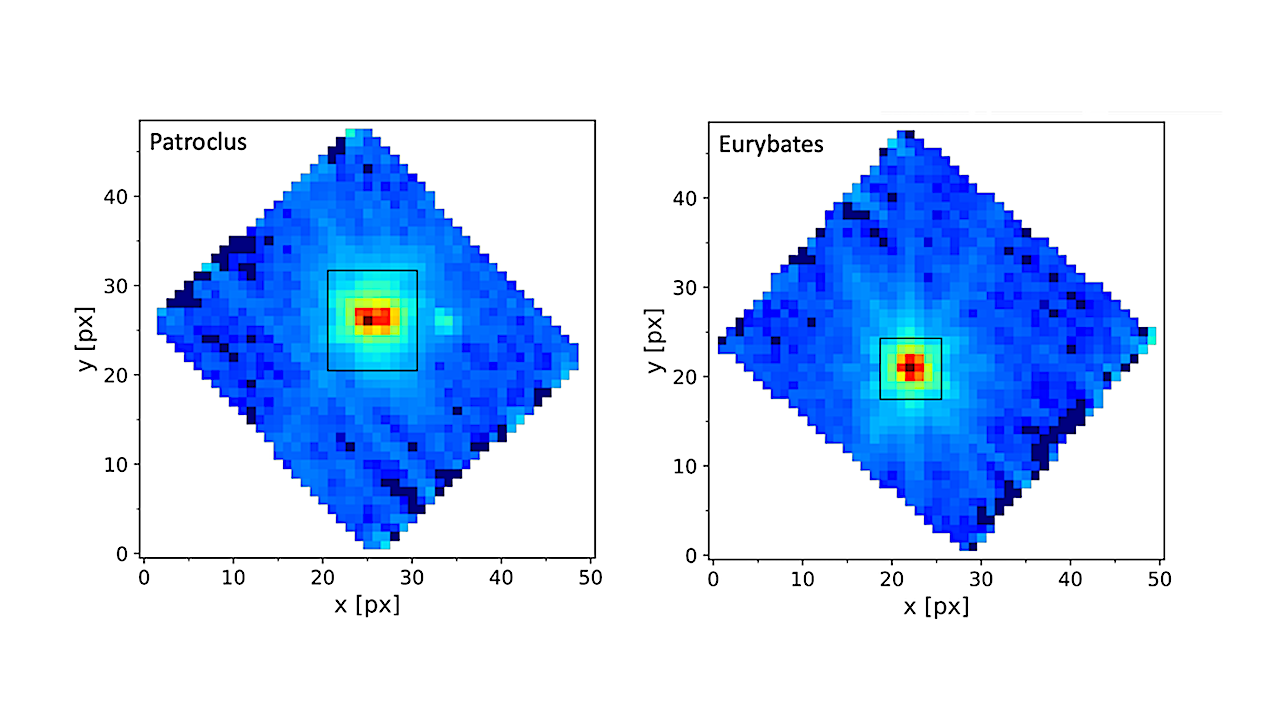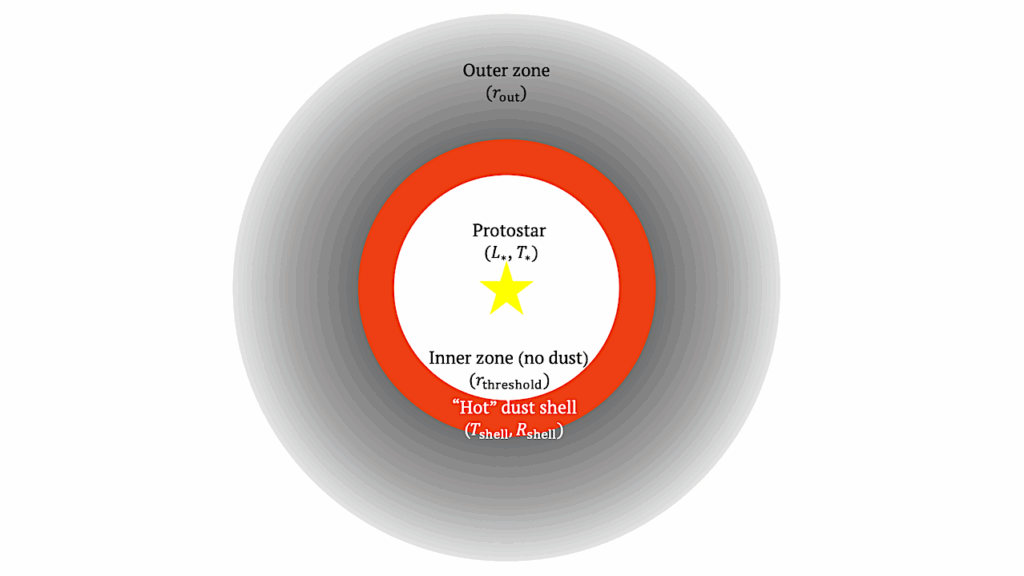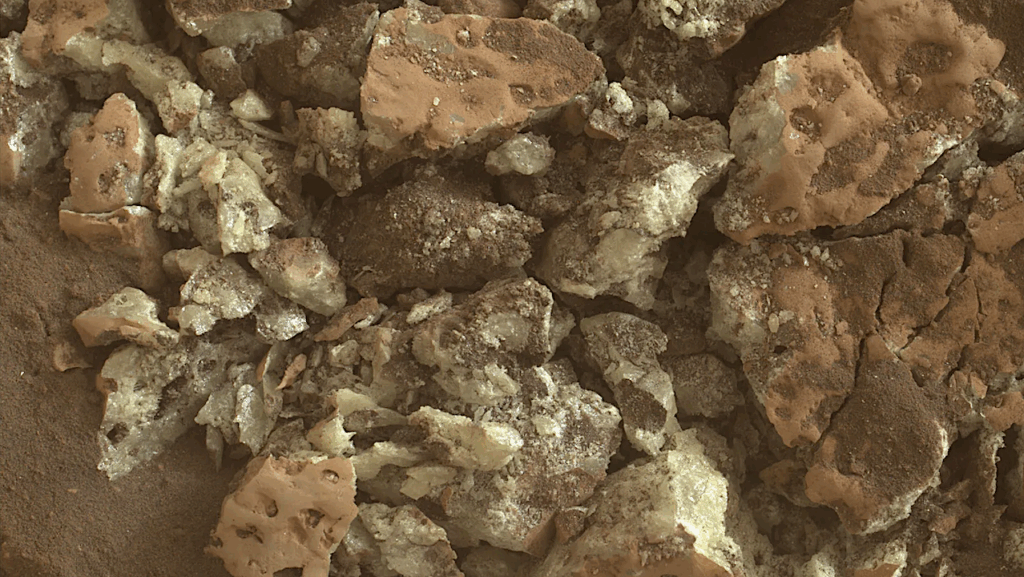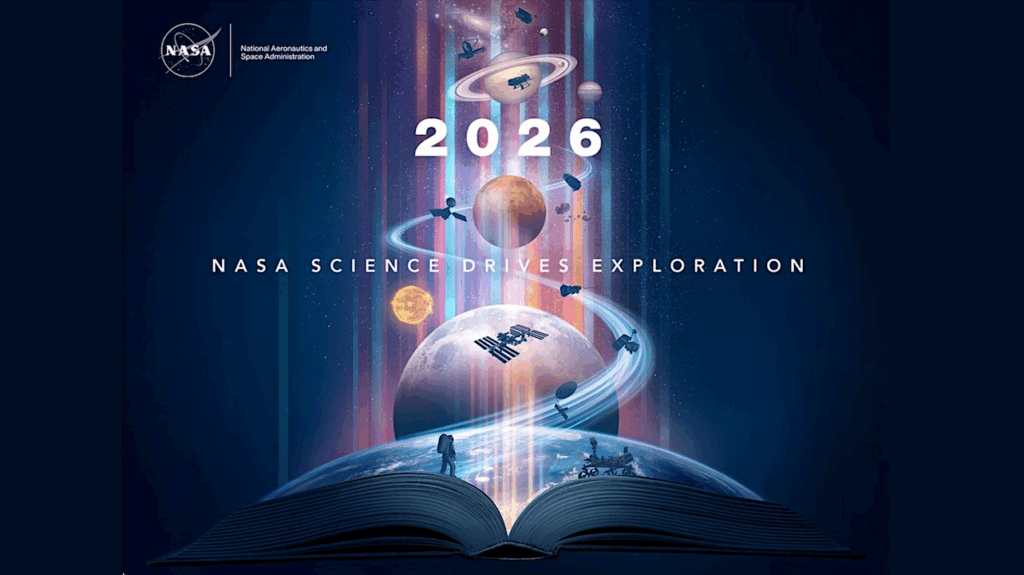JWST Near-infrared Spectroscopy Of The Lucy Jupiter Trojan Flyby Targets: Evidence For OH Absorption, Aliphatic Organics, And CO2

We present JWST/NIRSpec observations of the five Jupiter Trojans that will be visited by the Lucy spacecraft — the Patroclus–Menoetius binary, Eurybates, Orus, Leucus, and Polymele.
The measured 1.7-5.3 μm reflectance spectra greatly supersede previous ground-based spectroscopy in spectral resolution, signal-to-noise ratio, and wavelength coverage and reveal several distinct absorption features.
We robustly detect a broad OH band centered at 3 μm that is most prominent on the less-red objects Eurybates, Patroclus-Menoetius, and Polymele. An additional absorption at 3.3-3.6 μm, indicative of aliphatic organics, is systematically deeper on the red objects Orus and Leucus. The collisional fragment Eurybates is unique in displaying an absorption band at 4.25 μm that we attribute to bound or trapped CO2 (e.g., clathrates).
Comparisons with other solar system small bodies reveal broad similarities in the 2.7-3.6 μm bands on the Trojans with analogous features on Centaurs, Kuiper belt objects, and the active asteroid 238P. In the context of recent solar system evolution models, which posit that the Trojans initially formed in the outer Solar System, the significant attenuation of the 2.7-3.6 μm absorptions on Trojans relative to Kuiper belt objects may be the result of secondary thermal processing of the Trojans’ surfaces at the higher temperatures of the Jupiter region.
The CO2 band manifested on the younger surface of Eurybates suggests that CO2 may be a major constituent in the bulk composition of Trojans, but resides in the subsurface or deeper interior and is largely obscured by refractory material that formed from the thermophysical processes that were activated during their inward migration.
Ian Wong, Michael E. Brown, Joshua P. Emery, Richard P. Binzel, William M. Grundy, Simone Marchi, Audrey C. Martin, Keith S. Noll, Jessica M. Sunshine
Comments: Submitted to PSJ. 12 pages, 6 figures
Subjects: Earth and Planetary Astrophysics (astro-ph.EP)
Cite as: arXiv:2311.11531 [astro-ph.EP] (or arXiv:2311.11531v1 [astro-ph.EP] for this version)
Submission history
From: Ian Wong
[v1] Mon, 20 Nov 2023 04:30:12 UTC (622 KB)
https://arxiv.org/abs/2311.11531
Astrobiology, Astrochemistry,








